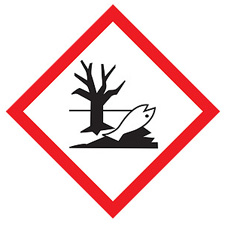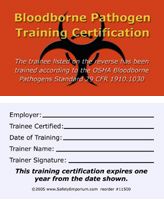| The Home page of ILPI's Safety Data Sheet (SDS) Resource, the leader in SDS information since 1995! | |
| The history and philosophy behind this resource. | |
| A curated collection of books and reference materials concerning Safety Data Sheets and closely related topics. | |
| Paste your plain text SDS into the SDS-Demystifier, and it will be converted into a hypertext-enriched document with links to detailed explanations of each key term. | |
| An extensive list of frequently asked questions about Safety Data Sheets including regulations, content, compliance, and more. | |
| A humorous take on Safety Data Sheet jargon. Fill in the blanks on our entry form to generate a personalized Unsafety Data Sheet to share with your coworkers. | |
| Since 1995, we've maintained this massive curated list of the best places to find Safety Data Sheets on the Internet. | |
| You are here! Way more than a glossary, this hypertext-enhanced resource covers hundreds of SDS-related terms and expert knowledge. Each entry includes both the SDS relevance and links to additional authoritative resources. | |
| Archived results of Safety Data Sheet related polls taken by some of our millions of site visitors | |
| The OSHA regulations behind SDS regulations, including the inspection guidelines and over 400 official interpretations letters under the Hazard Communication Standard | |
| Commercial suppliers of SDS authoring and management software as well as cloud compliance services. | |
| Commercial companies that will create SDS's for your specific needs as well as SDS translation companies. |

Safety signs, banners, and scoreboards? Get yours at Safety Emporium!
Definition

Get your GHS-compliant labels and signs from Safety Emporium.
Additional Info
Biodegradable materials are generally plant-based (e.g. wood, vegetable oil), animal-based (e.g. manure) or natural mineral-based products (e.g. carbon fiber polymers). In general, materials derived from nature retain some of their original chemical properties which provides a mechanism for microbes to do their work. Biodegradable materials can be solids, biodegrading into the soil (which we also refer to as compostable), or they can be liquids, biodegrading into water.
Products such as plastics made from man-made petrochemical compounds (i.e. those obtained from petroleum or natural gas), generally do not biodegrade. Modern research has focused on developing biodegradable plastics that disintegrate due to the actions of microorganisms. This is being accomplished by incorporating starch molecules into the polymer as it is made. When these plastics are discarded, bacteria eat the starch molecules, the polymer molecules break apart, and the plastic decomposes.
Consider, for example, foam packing peanuts. Those made from polystyrene do not readily decompose. However, ones made from starch will actually degrade in water. You can usually tell the two apart because the starch ones are a bit sticky to the touch.
Books Available

Make your PPE readily available with safety dispensers from Safety Emporium.
NOTE: We may collect a share of sales or other compensation from the links in the following list:
- "Biodegradation and Bioremediation", hardcover, 453 pages, 1999. Estimated price $127.00. Info and/or order.
- "Biodegradation and Bioremediation", hardcover, 270 pages, 2004. Estimated price $160.89. Info and/or order.
- "Biodegradation and Persistence, Volume 2", paperback, 327 pages, 2013. Estimated price $109.21. Info and/or order.
- "Biodegradation: Environmental Biotechnology", paperback, 96 pages, 2010. Estimated price $67.00. Info and/or order.
- "Biodegradable Polymer Blends and Composites from Renewable Resources", hardcover, 488 pages, 2008. Estimated price $167.00. Info and/or order.
- "Let it Rot! The Gardener's Guide to Composting, 3rd Ed", paperback, 160 pages, 1998. Estimated price $9.68. Info and/or order.
SDS Relevance
Section 12 of SDS's that conform to OSHA's implementation of the Globally Harmonized System (GHS) in the HCS 2012 regulation may list the environmental fate of the material and biodegradability. However, while SDS's are required to contain Sections 12 through 15, OSHA does not have the rulemaking authority to require manufacturers to provide content for those sections and they are deemed "non-mandatory". Therefore, Section 12 may be blank on many SDS's although many conscientious SDS authors will provide whatever information they can.
Biodegradation may also be found on SDS's when discussing whether the material can be safely discharged to the environment or waterways.

Get your bloodborne pathogen safety materials from Safety Emporium.
Further Reading
- The Biodegradable Products Institute.
- Key Considerations For Using Biodegradable Hydraulic Fluid at Flow Control.
- The US Composting Council.
- Bioplastics and biodegradable plastics at ExplainThatStuff!
- Bioplastics and the Truth About Biodegradable Plastic at the Huffington Post.
See also: Biological oxygen demand, decomposition, RCRA, TRI.